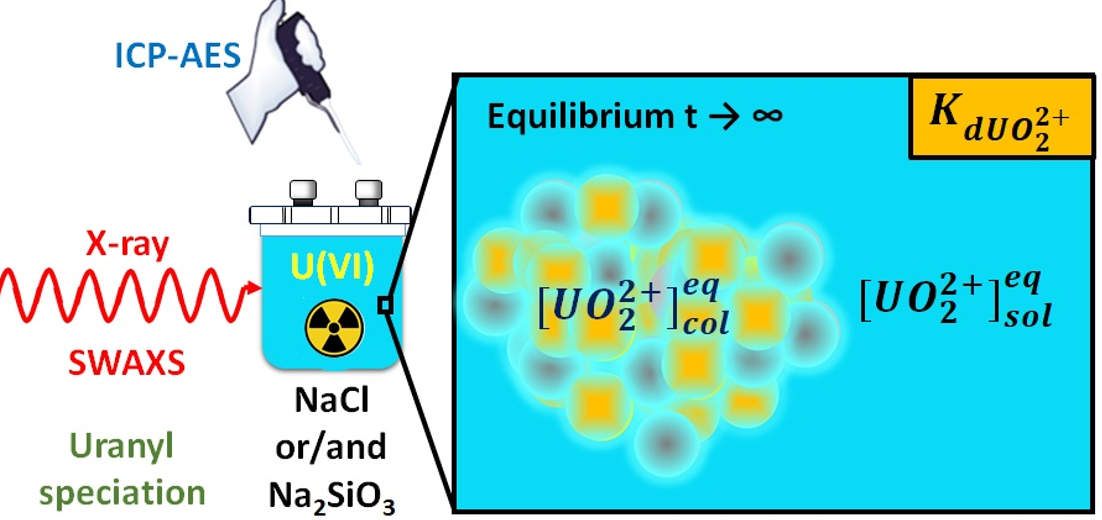
New results (01/02/2025)
Teams L2ME/LIMETowards a better understanding of the speciation of U(VI) in silicate and weakly alkaline media through an in-depth study of intrinsic U(VI) colloids
The formation of intrinsic U(VI)-based colloids has a potential impact on the dissemination of actinides in the environment. It is therefore essential to better identify their nature, their formation conditions and their stability domains. These properties are all the more important as the behaviour of uranium in the environment is generally predicted by geochemical modelling. This modelling is based on determining the speciation of U in various situations using thermodynamic databases that need to be continually updated.
As part of Hélène Barbier's Master I course and Christin Kraemer's thesis (ICSM/ L2ME), we have succeeded in identifying and characterising intrinsic U(VI) colloids that form in model solutions of simplified composition containing NaCl and/or Na2SiO3 at pH values between 7 and 10. Using a simple, reliable and systematic method based on speciation calculations, elemental analysis by ICP-AES and in situ characterisation by small- and wide-angle X-ray scattering, several properties of these U(VI) colloids were determined, such as their size, volume, concentration and chemical formula. These data were used to calculate the distribution coefficient of U(VI) between the intrinsic colloids and the solution. This distribution coefficient is used to estimate the fraction of U(VI) present in the form of colloids and likely to migrate into natural waters and react with environmental materials.
This work, carried out at the ICSM and supported by the RCHIM project, has been published in Chemosphere.

Credit: ICSM
For more information:
H. Barbier, D. Rébiscoul , C. Krämer, X. Le Goff, T. Zemb, S. Szenknect, Towards a better knowledge of U(VI) speciation in weakly alkaline solution through an in-depth study of U(VI) intrinsic colloids. Chemosphere 371C (2025) 144029.